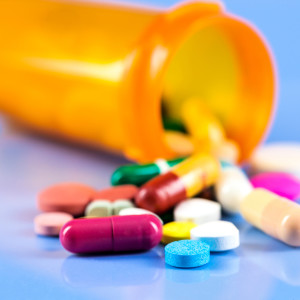Watch what we do — not what we say we’ll do. It would be truth in advertising to etch that in stone above the entrance to the Capitol.
The Affordable Care Act — Obamacare — being one of all-too-many examples that prove the point. It enshrined some of the worst — and most cost-increasing — aspects of the dysfunctional health care system.
One example of that being the 340B Drug Discount Program. It was created to serve a relatively small network of safety-net hospitals and intended — ostensibly — to reduce the cost of certain drugs — including cancer treatment drugs — by 30percent to 50 percent for low-income patients by imposing caps on the prices pharmaceutical companies could charge qualifying hospitals and pharmacies.
In turn — in theory — they were supposed to charge their patients less. Medicare patients in particular.
But a loophole — widened by the ACA — has been exploited to leverage these “savings” and turn them into what amounts to government-mandated corporate profits. Some hospitals — and big chain drug stores — are making book by exploiting the difference between the mandated-low price they are privileged to pay for the drugs under the 340B program and the actual price they charge patients (and insurers, including Medicare) for the drugs.
The loophole being that the 340B Discount Drug Program does not require the “savings” mandated by price controls on the purchase of drugs from the manufacturers be passed on to the patients who need the drugs. Sometimes they do — and often, they don’t.
It’s a loophole you could drive a Brinks truck through.
For example, an inquiry made by Sen. Chuck Grassley’s office found that three non-profit hospitals in North Carolina — Duke University Hospital, Carolinas Medical Center and UNC Hospitals — have profited to the tune of several million dollars via the 340B program.
Duke University alone reportedly generated $48.3 million in profits from the sale of DDD medicines; UNC reported $65.4 million in revenue generated between 2008 and 2011. That’s pretty good business for a safety-net hospital.
Nor is the abuse confined to North Carolina. Any hospital or hospital system that meets the safety-net criteria can participate in the 340B discounts. And reap the profits. Palmetto State Hospitals in South Carolina, for example, reportedly made $1.1 billion in profits in 2013 alone. This represents an eye-opening 70 percent increase in profits vs. 2011.
The Medicare Payment Advisory Commission estimates that spending by patients on 340B-eligible drugs has increased almost threefold since 2005 — the profits commensurate with that investment.
Drug sales under the 340B program — which were never intended by the program’s legislative authors to constitute more than a small niche of the market — low-income Medicare patients — are approaching 10 percent of the market (up from just 5.2 percent as recently as 2012). Critics suggest that most if not all of this growth is driven by the huge profit margins that are on offer.
But the problem here isn’t that the drugs cost too much — or that profits are too high. It is that prices — and profits — have been artificially manipulated for the benefit of some at the expense of others.
And because the source of this artificial manipulation isn’t generally known, people blame The Usual Suspect — drug manufacturers.
They ought to blame politicians such as Nancy “you have to pass it to know what’s in it” Pelosi, who talks abundantly about reducing the cost of health care while consistently causing it to increase via her regulatory and legislative manipulations.
And the crony capitalist “health care providers” who make a buck off government programs that may have been well-intended but which leak like a sieve.
The 340B’s “eligibility” clause is easy to manipulate — and so is manipulated.
Extremely costly cancer drugs bought at a government-mandated discount and meant to go to treat low-income patients are diverted to patients with top-shelf insurance coverage — and billed full price.
As an example, a drug that cost $1 under the 340B program can — and does — generate more than twice that amount in profits by the time it reaches the patient at a 340B hospital. And the artificially generated profits that 340B-eligible hospitals are able to leverage gives them a huge competitive advantage over non-340B providers. Flush with cash, the 340B safety-net hospitals can expand their operations, buy expensive equipment and hire more doctors.
To keep up, the non-340B hospitals are effectively forced to charge their patients more.
Which means we all end up paying more.
President Trump and former Health and Human Services Secretary Tom Price have both publicly talked about reducing the cost people pay for needed drugs. One obvious way to do this would be to end the legislated profiteering made possible — however unintentional — by the 340B program.
And made worse by Obamacare.

